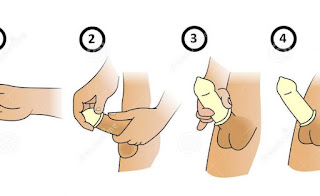HISTOLOGICAL AND CYTOLOGICAL SPECIMENS
Histological and Cytological specimens
Histological
specimens includes;
Inclusion biopsy
Exclusion biopsy
Curetings
Cytological
specimens includes:
Needle aspirates;
include fine needle and core needle biopsies
Smears
Washings/lavage
Effusions
Urine
Sputum
Importance of Histological specimens
Both
histological and cytological specimens can used for the following purposes-
a.
Diagnosis
of diseases: inflammatory conditions, hormonal imbalances, male infertility,
chromosome aberrations, micro-organism, pre-malignant conditions and malignant
conditions.
b.
Teaching:
Gross tissues specimen and stained slides can be used for teaching purposes.
c.
Research:
Collected cytological and histological specimens and archived specimens are
used in research works.
d.
Forensic:
Histological and cytological specimens can be used in determining the cause of
death and legal issue e.g. determining a murder, rape cases, paternity dispute.
Histological/Cytological containers
|
S/No
|
Specimen
|
Container
|
|
1
|
Incisional
biopsy
|
Histological bottle
|
|
2
|
Excisional
biopsy
|
Histological
bottle
|
|
3
|
Curretings
|
Histological
bottle
|
|
4
|
Aspirates
|
Universal
bottle
|
|
5
|
Needle
biopsy
|
Universal
bottle/Slide*
|
|
6
|
Smears
|
Slides
|
|
7
|
Washings/lavage
|
Universal
bottle
|
|
8
|
Effusions
|
Universal
bottle
|
|
9
|
Urine
|
Histological
bottle
|
|
10
|
Sputum
|
Histological
bottle
|
*Slide
is not a container but it has been put here to show that as soon as the
specimen is collected it had to be smeared/spreaded on slide.
Recommended Specimen-Fixative ratio
Histological
specimens
Fixative
to be used should be determined before collection of the specimen; will be
determined by structures and inclusions to be demonstrated.
Recommended
ratio of size of tissue against the volume of fixative should be 1:10.
Cytological
specimens
Fluid
specimen should never be mixed with fixative prior to smear preparation,
instead can be preserved in low temperature i.e. refrigerator temperature. As
soon as the smear is prepared. It should be fixed immediately. Prepared smear
must be wholly immersed in a fixative used. If spray-fixative is used make sure
the whole smear is covered evenly with applied fixative and left to air-dry.
Key
points
·
Histological
specimens includes; Inclusion biopsy, Exclusion biopsy and Curretings
·
Cytological
specimens includes: Needle aspirates, Smears, Washings/lavage, Effusions, Urine
and Sputum
·
Recommend containers for histological and cytological specimens
are histological bottles and universal bottle respectively; however smears are
prepared on glass slides.
·
To histological specimens, recommended ratio of tissue size
against volume of fixative is 1:10. To cytological specimen make sure it is evenly
covered or wholly immersed in the fixative used.
Evaluation
·
List
any two histopathological specimens
·
Explain
any two importances of histological specimens.
·
Mention
containers used to histological and cytological specimens.
·
State
the recommended ratio of volume of fixative against size of the histological
specimen.
References:
·
F.J.
Baker, R.E. Silverton, Introduction to Medical Laboratory Technology, 7th
Edition, (2001) Oxford University Press;
·
F.I.
Carson, Histotechnology, A Self Instructional Text, 3rd edition
(2009) ASCP Press
·
R.A.B
Drurry, E.A. Wallington, Carleton’s Histological Technique, (1976) Oxford
University Press
·
J.D
Bancroft, M. Gamble, Theory and Practice of Histological Techniques,6th
edition,(2008) Churchill Livingstone Elsevier.



Comments
Post a Comment